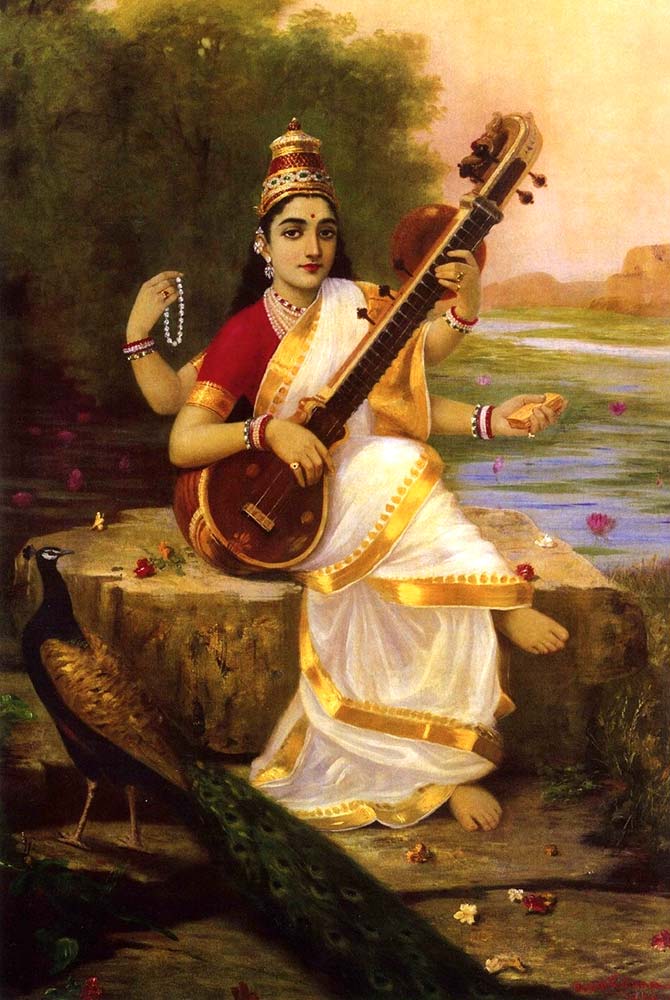- Visitor:34
- Published on: 2024-04-20
Celestial Choreography: Hindu Sculpture and the Play of Paramatman
Maya also means art and magic, and thus a seeming solidity evoked by divine power. But under the spell of this power the Hindu does not feel himself entirely a victim. However obscurely, he knows or feels that the source of this enchantment is in some roundabout way himself-as if being alive and human were to have got oneself deliberately lost in a labyrinth.
.jpg)
The Cosmic Dance
What is more exuberant than Hindu sculpture? I am thinking of those ovoid domes of stone at Konarak, Bhuvaneshwar, and Khajuraho, which look, at first sight, as if they had decomposed into the kind of squirming vitality that one finds upon overturning a rock, as if they, were alive, with anthropoid maggots, swarming together in a colossal rout of dancing, fighting, and copulating. But close inspection reveals that the stone has come alive in figures of unbelievable grace and lilting sensuousness-at one time vividly polychromed, but no, perhaps all the better for being the combination of drab gray rock and endlessly dancing form. One must look at these temple figures in the light of classical Hindu dancing-an art in which jeweled bodies move as if they , were plants suspended in water, where muscles are an ivory liquid, and where legs, hips, belly, shoulders, and head move quite independently in their own planes. Such exotic, rich, and jungle-like displays of human fecundity are perhaps repellent to the Western, and especially Anglo-Saxon, taste. But to penetrate the depth and grandeur of Hindu mythology and philosophy, one must somehow allow oneself to enter into this seething imagery, and then feel one's way down through its bewildering variety to the simple and presiding intuition which underlies it.
In a world of intense heat, of the most startling extremes of fertility and aridity, wealth and poverty, and, where life is cheap and security almost unknown, the human mind can acquire a peculiar sensitivity. Somehow the world seems lacking in solidity. External forms and surfaces are now diaphanous, and now bristling with the sharpest points. Nothing is certain but change, and change is less apt to be gradual and orderly than sudden and unforeseen. It is not surprising, like an arabesque of smoke, and that its totally unreliable transitoriness has been the principal ground for considering it to be fundamentally unreal.

But the word maya, by which this peculiar unreality is described, is not necessarily a term of contempt, as if the world, were merely an illusion to be dismissed. Maya also means art and magic, and thus a seeming solidity evoked by divine power. But under the spell of this power the Hindu does not feel himself entirely a victim. However obscurely, he knows or feels that the source of this enchantment is in some roundabout way himself-as if being alive and human were to have got oneself deliberately lost in a labyrinth.
:max_bytes(150000):strip_icc()/86073566-56a483ba5f9b58b7d0d75cea.jpg)
For the presiding intuition of the Hindu world-view is· that the whole universe of multiplicity is the lila, or play, of a single energy known as Paramatman, the Supreme Self. The coming and going of all worlds, all beings, and all things is described as the eternal outbreathing and inbreathing of this One Life eternal because it is beyond all dualities, comprising non-being as much as being, death as much as life, stillness as much as motion. One of the principal symbols of the Paramatman is the Swan, Hamsa, flying forth from its nest and returning, and the syllable ham stands for breathing out, sa for breathing in. As the exhalation and inhalation are repeated endlessly, ham-sa-ham-sa-ham-sa-ham, there is also heard saham, that is, sa aham, ''He I am''-which is to say that the essential self of every being is the Supreme Self.
Bibliography:
Watts, A., 2020, The Cosmic Dance, The two hands of God: The myths of polarity. New World Library., pp. 75-77.
Center for Indic Studies is now on Telegram. For regular updates on Indic Varta, Indic Talks and Indic Courses at CIS, please subscribe to our telegram channel !
- 17 min read
- 0
- 0










